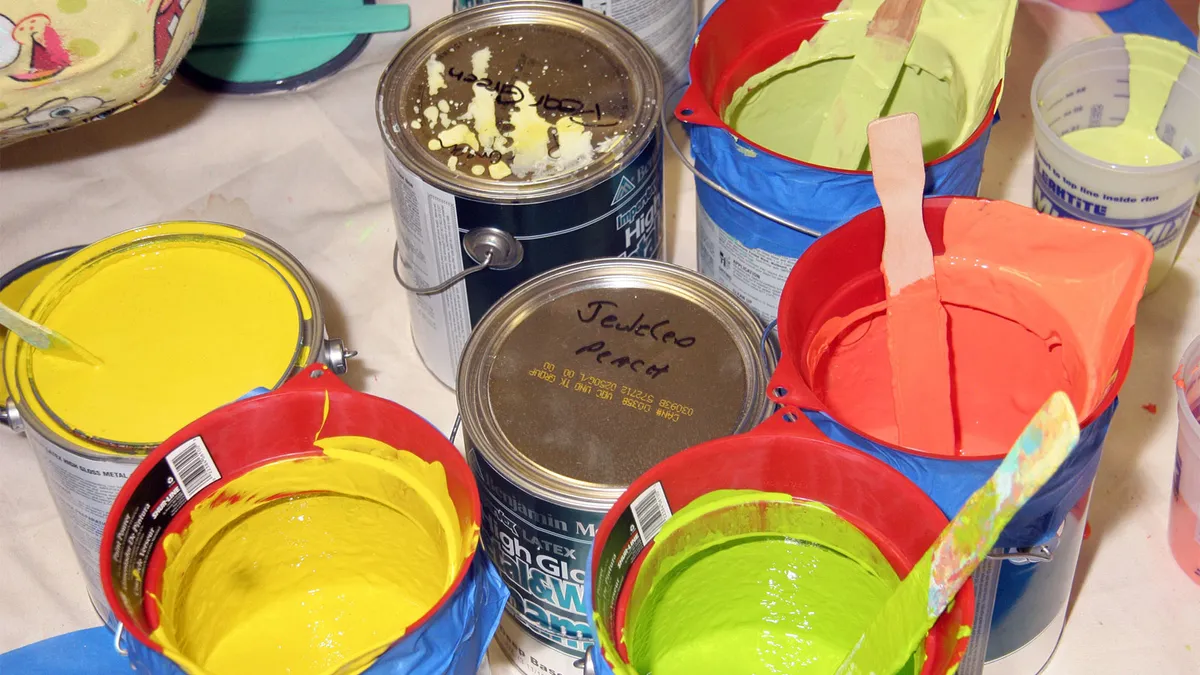Professional tradesmen always have a few key tips and secrets that are learned over the course of working years learning their craft one tip for professional painters is adding water to some paints for specific reasons and there is a method to it. Can you add water to paint?
Yes, you can add H2O to water-based paint to thin it out to delay drying time, apply 2nd coats & use a paint sprayer. The amount of H2O you add will depend on the paint’s desired consistency, start with 1/2 cup per gallon, & increase to 2-4 cups the amount as needed & more for paint sprayers.
The secret is to not add too much or your paint will run and be difficult to apply. Start by adding a little bit of H2O to your paint and mix it well, the more water a little bit at a time until you have a consistency that you’re happy with.
Can You Add Water to Paint
Yes because Latex and Acrylic paint are similar and are made with water then water can be added to thin the paint to stretch the amount along with cleaning up. You can add water to paint to thin it out. This is often done to achieve a smoother application, especially with water-based paints like acrylics.
However, it’s essential to follow the manufacturer’s recommendations regarding the ratio of water to paint. Adding too much water can affect the paint’s adhesion, coverage, and durability. Additionally, some types of paint, like oil-based paints, may require different thinning agents instead of water. Always check the product label for specific instructions.
Paint is divided into two categories: oil-based and water-based paints.
- Oil-based paints can be thinned or cleaned up only with mineral-based products.
- Latex and Acrylic paint is a water-based product and should be cleaned up and thinned only with water.
Water-Based Paint
Water-based paint is a staple in almost every interior and exterior painting project. This type of paint is easy to clean up, dries quickly, and doesn’t have a harsh odor like some oil-based paints. Oil-based paints dry much harder providing exceptional resistance to wear and tear and are harder to clean up.
Latex and Acrylic make up the two types of water-based paints and each has its different purposes. Latex and acrylic paint are used mainly to paint homes, structures, and spaces. Some paints used for artwork and hobbies are also referred to as acrylic. Paint labeled acrylic has more acrylic polymers than latex paint but both are water-based.
Water-based paints function brilliantly on exterior projects. Mainly because they are much more resistant to UV rays, letting them retain sheen levels and color over lengthy periods.
The flexibility in the water-based paint allows materials to contract and expand which makes it perfect for outdoor use. Oil-based paints are much more accepting of different weather conditions. Consequently, humidity and extreme temperatures do not have a huge impact on application and drying times.
There are a few reasons you might want to mix water with Latex or Acrylic paint.
Thinning Water-Based Paint
The main reason professional painters add water is to delay drying time. Latex paint adheres and spreads best if the paint remains wet until an entire wall or section is completed. If not brush strokes show in the final product if wet paint is applied on top of paint that has already dried. Adding a little bit of H2O maybe 2-4 cups per gallon is an easy way to accomplish this.
Another good reason for thinning the paint with water is for the ease of applying and the look of a second coat or watering down paint for use of latex paint in a paint sprayer. If you have ever used one you’ll remember that thicker paint won’t move through the spray nozzle clogging it and slowing down the job.
If you want to water down the gallon of paint for any reason first checks with the manufacturing suggestion for the exact amount you need to do it which will be found on the can’s label.
- Use a 5-gallon bucket if mixing a 1-gallon can of paint
- Check with the Paint Manufacturer on the label of the can about the amount of H2O needed (each one is different)
- Start by pouring 2 cups of room temperature H2o (preferably Distilled water)
- Stir the paint and the water gradually looking for a smooth and creamy texture
- Test the paint with a brush or roller
- If mixing for a sprayer you’ll need to dilute it down further
For more great information on articles revolving around water stay right here on MyWaterEarth&Sky-If your battery’s power is reduced, your vehicle is hard to start, slow cranking & won’t recharge properly, look for dimming lights, an alternator, or a battery light flickering on ………………………………………………… Continue reading

References:
Five-Star Painting–Water Based Advantages
